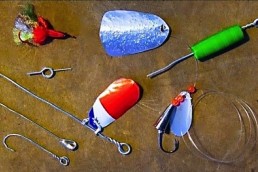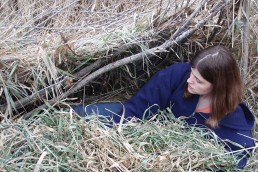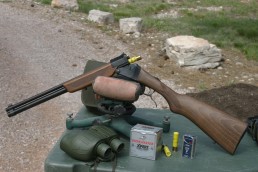Survival Tips: Assess What You Have
SHARE THIS POST
Survival Tips: Assess what you have
One of many survival tips is to keep a clear head. A critical reason for keeping a clear head in an outdoor emergency, maintaining that Positive Mental Attitude (PMA), is to be able to think on your feet––and ‘see’ into the future. What part of your bad situation, right now, could get even worse? Taking a mental inventory of those issues is one of the earliest steps in a survival situation. Once you’ve accepted the fact that you are up that proverbial––and infamous––creek without a paddle, you need to assess what you do have.
Check for immediate threats
Your very first priority assessments may have to happen quickly, simultaneously. Depending on the nature of your emergency, it’s usually critical to immediately get out of harm’s way. Your first ‘inventory’ thus becomes being aware of any potential dangers that still could threaten your safety.
Administer first aid
Backcountry first aid response begins with an inventory of all injuries and administering the appropriate, prioritized treatments quickly. Assess yourself for injuries first, then others in your party. Each victim should be examined for their degree of consciousness and checked for breathing, any bleeding and any disability concerns. The mechanics of injury can help determine what first-aid measures must be taken.
Understand your location
Once you’ve stabilized your situation, even if temporarily, you can assess the location to determine whether you can establish a rescue base there or if you need to find a better location elsewhere. Part of your inventory process is to find an optimum physical location. Factors such as weather, terrain, remoteness and resources all help determine where you should establish your emergency camp.
You may have to re-assess and adjust several times before your situation begins to stabilize and broadens your options.
Take stock of what’s left
Other critical inventory assessments should be initiated soon after immediate personal injuries are treated. In many emergency situations, your vehicle’s been damaged, your food has been lost, your tent ruined. What’s left or salvageable become the first entries on your hopefully long list of emergency resources. Taking inventory should be an ongoing process, something you assess visually from the onset. Make mental notes of everything around you. No matter how trivial you may think an item is, mark it down on that checklist in your brain.
Perhaps you uncover a small section of a large diameter rope. A summer sausage-sized segment so unwieldy that you can’t even tie it in a simple overhand knot. Useless, right? What if you unraveled the individually thinner strands and tied those short strands together? Now, you are on your way to making workable cordage for lashing a frame for your shelter, fashioning a snare or making fishing line. You don’t need to decide what to do with a discovery, just add it to your list of available resources.
Becoming survival-minded
Possessing your own self-reliance skills and survival tips gives you a solid base for spring-boarding ideas for using what you find. Fragments of a broken plastic bucket can become a handy scraping/digging tool. Or, lay the pieces out like shingles or roof tiles to direct rainwater into a receptacle or a collecting basin. Create the latter by lining a depression with that remnant of a tattered nylon tarp you found. Those flat, broad pieces of bucket can also become a make-shift signal ‘mirror’. They throw off a glint of sunlight when you wet the surface.
Are you enjoying this post?
You can be among the first to get the latest info on where to go, what to use and how to use it!
Some of the more common materials found will help you construct your shelter. Look for natural settings, as well. A low-growing branch arching horizontally above the ground can become a crossbeam to support a tarp or a thatch-like roof. Chunks of timbers and other wood scraps are convenient fuel for fires as well as building materials that can take on myriad roles in a survival situation.
Survival tips: nothing is junk
There’s no such thing as “junk” in an emergency scenario. A crushed soda can might be reincarnated as shiny flashers for a fishing lure. A sharp edge is a cutting tool. Or, use the can as a small container for boiling water.
Different parts of the country have stockpiles of emergency resources representative of the lifestyle and culture of that region. Anyone who’s walked a remote beach along one of our continental oceans can attest to the plethora of flotsam and jetsam along its shores––unsightly, yes, but a treasure trove of self-reliant resources in an emergency.
Find water, then food
Beyond materials for a shelter, equally vital to your survival is knowing what water and food sources are available. Part of your initial recon of an area should determine whether you’re in an optimum location for short- or long-term survival, and if any factors might ultimately worsen the current situation. Scouting the area may tell you that you need to find a better location— one with more resources or fewer potential hazards.
Every task in an emergency situation taps the body’s energy reserves. You need to pace yourself as you undertake your inventory. Not only should you assess the utility of a resource, but the expenditure of energy needed to get value from it. If it takes more energy to gather and create a snare trap than it will from the food you hope to catch, perhaps you should consider an alternate means of getting dinner.
In an emergency inventory, everything is mentally tagged, everything is important. Identifying what resources you have to work with, and having the skills to get as much utility from those materials as possible, are critical to self-reliance in the outdoors. Follow these survival tips, and you’re one step closer to rescue.
Looking for more survival tips? Check out our list of Seven Steps to Survival in the Wilderness.
MWO
SHARE THIS POST
Did you enjoy this post?
You can be among the first to get the latest info on where to go, what to use and how to use it!
MWO
We believe being outdoors is good. With more than 1,000 articles each year, MidWest Outdoors magazine is all about sharing outdoor experiences with you—where to go, what to use and how to use it… whether you’re close to home or on that trip of a lifetime.



